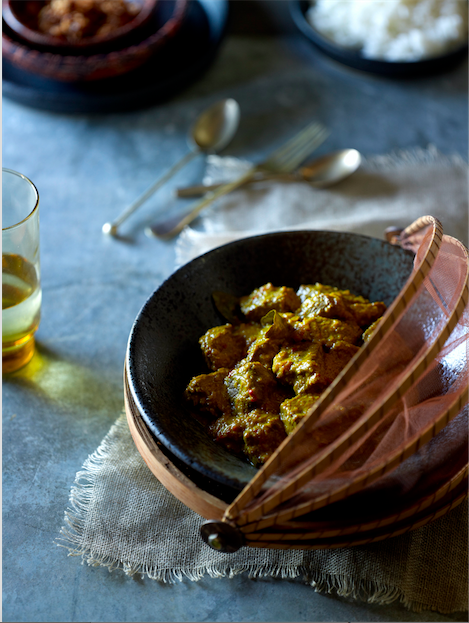Balinese Beef Rendang (Rendang sapi Bali)
Inroduction
About this Recipe
By: Sheridan Rogers
Rendang, a flavourful dry beef stew, is one of Indonesia’s most popular dishes. Originally made with buffalo meat, this version is from Janet De Neefe’s fabulous book Bali: The Food Of My Island Home (PanMacmillan). She points out that, in keeping with Hindu dietary restrictions, beef is seldom served in Balinese households, although it is not completely forbidden (in the Central Javanese city of Yogyakarta, it is made with young jackfruit and called gudeg). It’s quite simple to make, with a basic spice taste featuring the acclaimed trio of galangal, turmeric and ginger which commonly appears in Indonesian cooking. “The rendang has all the virtues of a slow-cooked stew: comforting, tender and full of flavour, with the aroma of lemongrass, lime leaves and salam leaves,” says Janet.

Ingredients
- vegetable oil 3 tablespoons
- lemongrass stalks 2, bruised and tied together in a loose knot
- kaffir lime leaves 3
- salam leaves 3 (see note below)
- coconut milk 500ml
- water 250ml
- beef topside 500g, cut into bite-size chunks
- wet tamarind pulp 1 tablespoon, dissolved by hand in 3 tablespoons water, strained
- palm sugar 2 tablespoons, grated
- steamed rice to serve
- fried shallots for garnish
- candlenuts 6 (or unsalted macadamias)
- cumin seeds 1/2 teaspoon
- red shallots 8, roughly chopped
- garlic cloves 8
- long red chillies 6, seeded and roughly chopped
- galangal 4 tablespoons, peeled and chopped
- fresh ginger 2 tablespoons, peeled and chopped
- fresh turmeric 2 tablespoons, peeled and chopped
Make the Spice Paste: Heat a wok over medium-low heat and dry roast the candlenuts until lightly browned and fragrant. Place in a large mortar with the remaining spice past ingredients and pound to a smooth paste. Alternatively use a blender or food processor, adding a splash of water to get the mixture moving if needed. Heat the oil in the wok over medium heat and fry the spice past for 30 seconds. Add the lemongrass, lime leaves and salam leaves and toss for another 30 seconds, or until glossy and fragrant. Pour in the coconut milk and water and bring to the boil. Reduce heat to a simmer and cook for another minute, then add the beef, tamarind water and palm sugar. Simmer for 2 hours, topping up with a little water if needed, or until the meat is very tender and the sauce has reduced to a thick gravy. Serve with steamed rice, topped with fried shallots. Note: Salam leaves belong to the cassia family and are sometimes described as Indonesian bay leaf, though the flavour is more subtle. Janet suggests using dried leaves if fresh aren’t available.

the recipe is easy to understand and practice can be in accordance with his expectations, keep the spirit in developing the website. Other updates are still great.
🙂